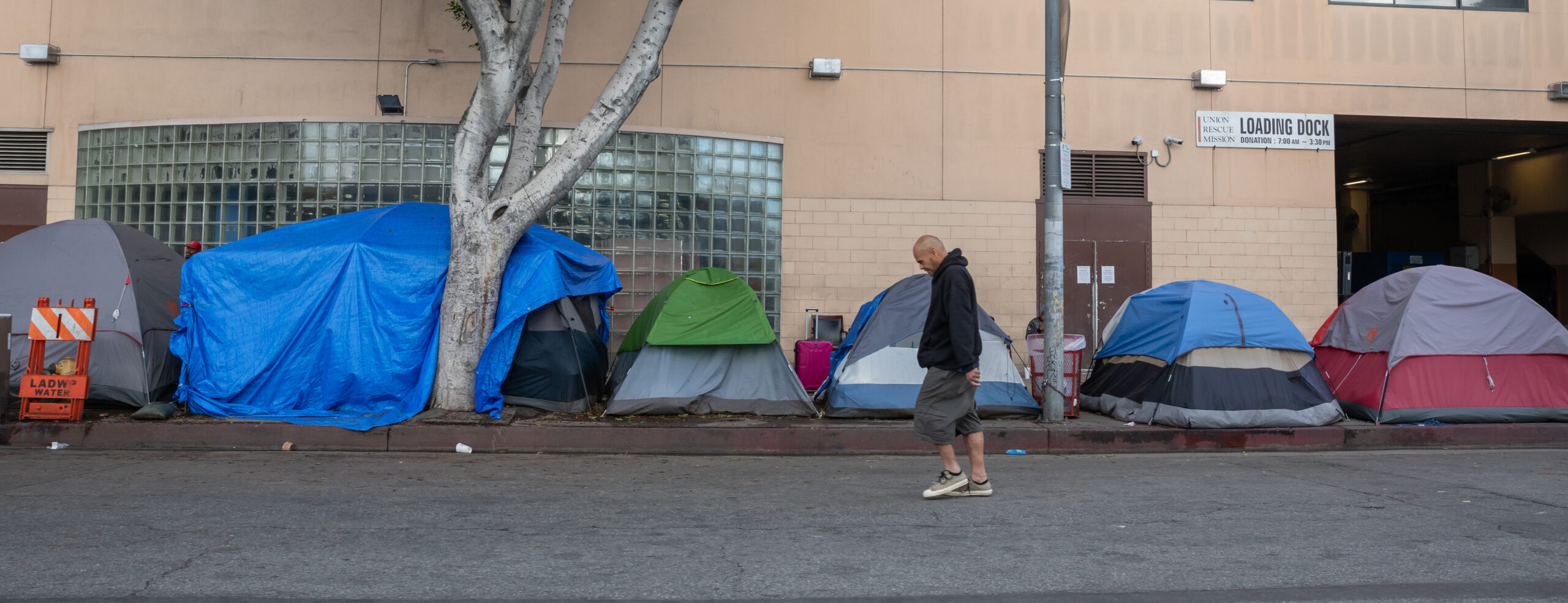Written by Josh Johnson and Andrew Hall
Next week, folks from across the country are gathering in Oakland for the Alliance’s national conference to share ideas and solutions on addressing unsheltered homelessness. Here’s some background on unsheltered trends, what communities are doing to respond, and where we can go from here.
An Overview of Unsheltered Homelessness
Unsheltered homelessness in the United States is on the rise. The number of people living unsheltered has been steadily increasing since 2015 and currently stands at more than 233,000 individuals in 2022, according to the latest U.S. Department of Housing and Urban Development Annual Homeless Assessment Report to Congress (AHAR) Part 1.
Forty percent of the overall population of people experiencing homelessness in 2022 live unsheltered, but this percentage varies across different subpopulations. Unsheltered homelessness is overrepresented among people of color, especially Asian, Pacific Islander, Native Hawaiian, or Native American people experiencing homelessness. More than half of the overall homeless population in those groups live unsheltered, suggesting that they may disproportionately lack access to shelters. Unsheltered individuals also make up 59 percent of those experiencing chronic homelessness, 44 percent of unaccompanied youth under 18, and 41 percent of veterans experiencing homelessness.
Communities are seeing a rise in unsheltered homelessness due to a myriad of factors: the lack of affordable housing and increasing housing costs; stagnant wages; and pandemic-related disruptions, which led to a stop or reduction of services for people experiencing unsheltered homelessness. Since these resources have shifted, so too has the way that people experience unsheltered homelessness. This includes encampments: a product of a system failure, not an individual one.
What Communities Are Doing to Respond
Addressing Encampments with Strategic Community Practices
Relying heavily on law enforcement to cope with unsheltered homelessness and encampments has not proven to be successful, and results in added trauma and criminalization of homelessness. Without clear leadership, person-centered and housing-focused services, and humane policies and procedures for addressing unsheltered homelessness, the travesty of people living unsheltered will continue.
What we have learned through our work and engagement with communities is that communities making strides in resolving unsheltered homelessness are centering efforts from a systemic and humane approach. Examples that are working (and that conference attendees will have an opportunity to learn more about) include:
- Using housing as the anchor to address unsheltered homelessness: Communities making strides continually center voices of individuals living in encampments (or who are experiencing unsheltered homelessness) with development and/or implementation of encampment resolution processes. Decision makers also should include members of the Continuum of Care (CoC), local city and county officials, advocates, and other key stakeholders.
- Utilizing multidisciplinary, culturally-responsive, housing-focused outreach practices: Using this outreach approach helps to better provide comprehensive services to connect unsheltered individuals to permanent housing or interim housing. It can also help to meet, ensure, and advocate for basic needs of folks experiencing unsheltered homelessness.
- Utilizing grassroots organizations who historically have relationships and have built trust with BIPOC communities.
- Utilizing coordinated entry as a crucial component to connect folx quickly to available housing interventions.
- Increasing Rapid Re-Housing resources targeted for unaccompanied and unsheltered individuals.
- Analyzing, retooling, and/or adding emergency shelter beds to ensure low barrier access for appropriate number of effective shelter beds [1].
- Closing encampments only when everyone has been connected to permanent housing or interim housing.
- Never criminalizing someone for being homeless, especially where there are no other housing alternatives.
These approaches are effective responses to unsheltered homelessness because they preserve human dignity, address homelessness at the root, and don’t mismanage precious resources for interventions that have been proven to be unsuccessful.
Partnering with Local Government
While service providers are on the forefront of homelessness response, local governments have a critical role to play in housing the unsheltered population. Successful CoC partnerships with local government can result in:
- directing state and federal funding towards established homelessness initiatives;
- removing barriers to increasing the stock of affordable housing;
- protecting tenants to keep people in their homes and prevent them from experiencing homelessness in the first place; and
- ensuring basic needs are met for people living unsheltered, such as access to public restrooms, wash stations, and trash removal.
For communities to successfully implement a plan to end unsheltered homelessness, a strong partnership between the CoC and local government is key.
Where Do We Go From Here?
Under the guise of expediency, clearing encampments and criminalizing unsheltered homelessness inadvertently causes tremendous harm to people experiencing homelessness. It results in eroding the fragile trust established by service providers, unnecessarily involving people living unsheltered with the criminal legal system, wasting public funds, and exacerbating homelessness.
We must take an equitable systems approach to unsheltered homelessness, with the goal of working to house the unsheltered population and not continue to perpetuate inequities. The priority should be on long-term solutions rather than quick surface-level detrimental actions. We look forward to discussing these issues in more depth at the conference.
[1] Embraces a Housing First approach, implements safe and appropriate diversion, offers immediate and low-barrier access to anyone facing a housing crisis, measures shelter performance in order to improve results, practices cultural humility and inclusion, and follows HUD’s Equal Access Rule.

